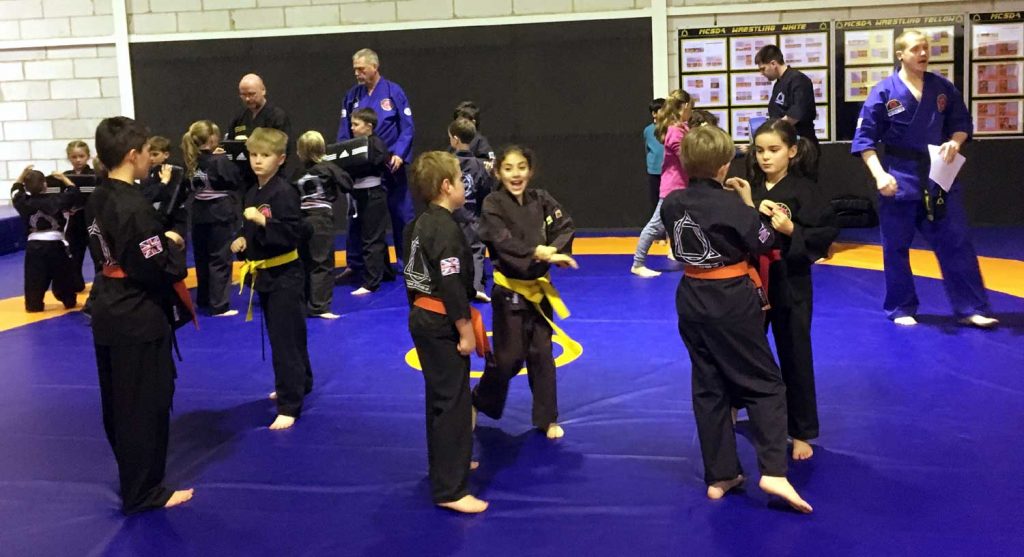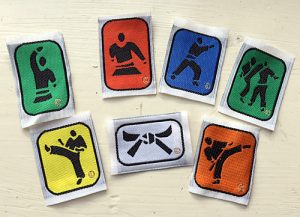With a blood curdling cry, your six year old leaps into the air, launching a ‘karate kick’ having just watched Ninja Turtles, simultaneously raising your hair and blood pressure. Before panic sets in and you start to think about padding the walls, try channelling this energy into a martial arts class. Stringer JUKADO is a fun way for both boys and girls to achieve fitness and focus.
Some parents mistakenly think that the study of a martial art promotes violence, but that’s a myth, according to experts. (Child psychologists and others) the study of a martial art actually helps to teach socialisation skills as well as instilling discipline and confidence. Experts agree that its the respect that children learn, whether from bowing or standing still and waiting for the Instructors next command, that can be the most important benefit. These benefits often carry over into school life, helping to improve behaviour and even grades, according to recent research.
Class
A typical hour long Junior Class at MCSDA begins and ends with a show of respect. The class bows to the Instructor(s) who in turn bow back to the class. Thus actively demonstrating the receiving and giving of respect. After a warm up (series of exercises designed to build flexibility, strength and co-ordination) students practice that sessions particular skill set. This may include kicks and punches against a strike shield or pad, blocks, throws and self-defence. Each aspect requires concentration, application and strict attention.

At MCSDA we never kick and punch to ‘thin air’ this practice can be very damaging to joints and especially so to those of young children whose bones and ligaments are not fully developed. Furthermore by making contact with a strike shield your child learns the correct way to strike and kick whilst also realising that they have some degree of physical prowess which increases confidence.
Progressing and the belt system
Progress is by a coloured belt system, taking the beginner from the white belt of the novice, through a variety of colours until Black Belt with a white stripe indicating a high skill level but obviously not with the same function and ability as that of an adult, hence the white stripe through the black belt for Juniors. At MCSDA we do not believe in issuing full black belts to Students under the age of 16 yrs and only then in exceptional circumstances, the norm being 18 yrs old or above. Testing for new ranks takes place every four months.

The Junior Rank System is further supplemented by our Martial Arts Merit Badge Award Scheme which operates by setting children short term achievable goals which contribute to their overall progress and helps maintain interest and motivates your child to attend classes regularly. One of the first Merit Badges that can be achieved is for regular attendance.
Regular attendance = progress = motivation = regular attendance.
According to Dr Mimi Johnson of the American Academy of Paediatrics Committee on Sports Medicine and Fitness, the best age for a child to start a martial art is around six years old, as by that time, your child should have enough muscle control to punch and turn properly and safely. essential to getting a real kick (pun intended) out of their martial arts classes.
SD4K Syllabus
SD4K (Self Defence for Kids) Syllabus (PDF)
You can view or download the complete SD4K (Self Defence for Kids) Syllabus in PDF format. Please note that any content is subject to copyright and is not to be distributed in any way. This download is intended for personal use only. MCSDA can accept no responsibility for any loss or injury that may occur as a consequence of this download. Whilst we make every effort to ensure our site and its contents are free from malware and viruses it is good practice to scan any download with a reputable virus checker program prior to opening.
